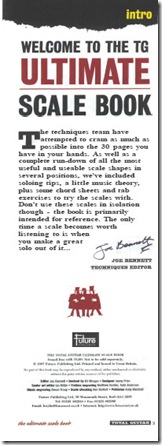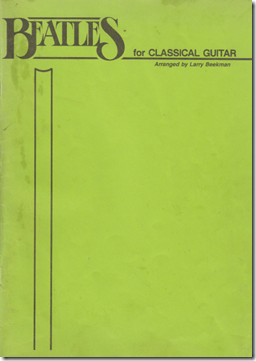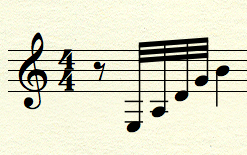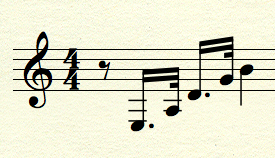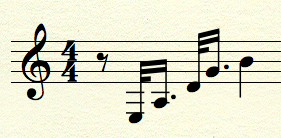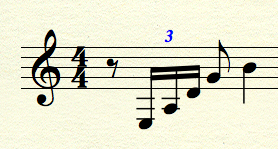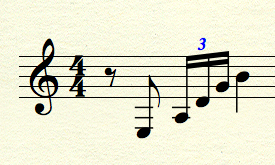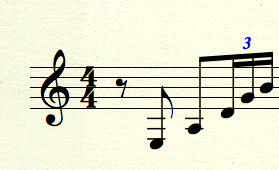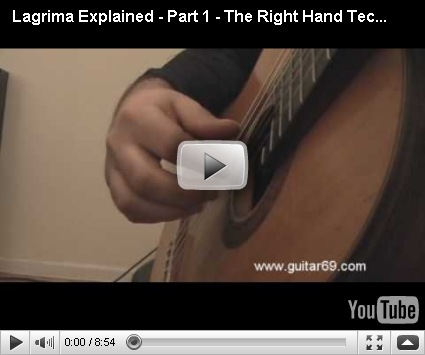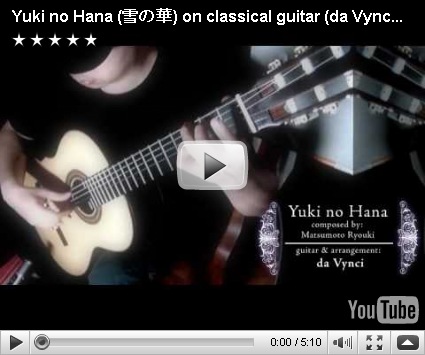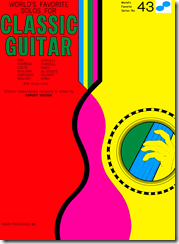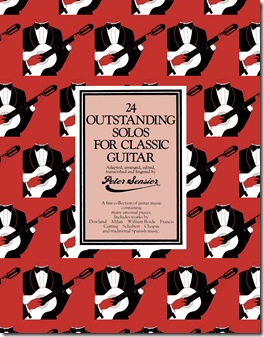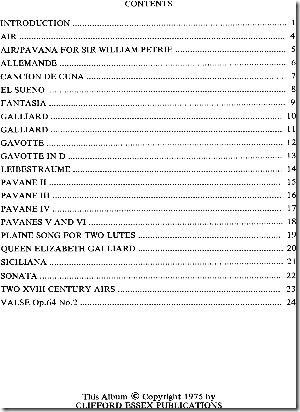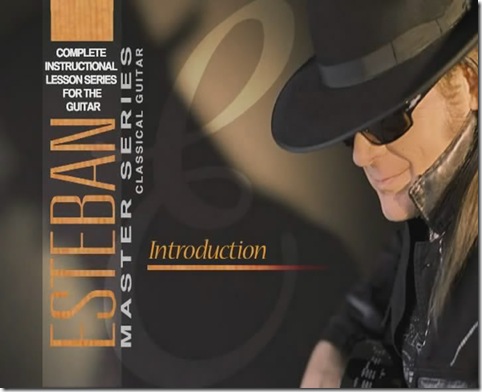Besides practice, a good starter guitar is probably the single most important element in successfully learning to play the guitar. Whether for yourself or as a gift for someone else, the right guitar is crucial, especially in the beginning stages. Many people think, "I'll start off cheap and, if I'm any good, I'll get a better one later." This approach rarely succeeds. The best chance for success comes when you plan for success right from the start.
If possible, get your guitar from a reputable music store. A guitar from a music store might cost a little bit more, but if you have any problems, the staff at the music store will be there to help. With the Internet, a department store, or a pawn shop, you can't expect individualized help if you have a problem. Especially for beginners, the extra support that a real music store provides can be worth its weight in gold.
You don't need to spend a lot of money to get a good starter guitar, but you should plan to get the best guitar you can afford. The first three or four months of learning are crucial. If the guitar breaks or otherwise quits during the beginner phase, most people will simply get discouraged and give up. Don't let that happen to you. Quality can be very affordable if you know what to look for. Poor quality is usually the most expensive of all.
Buying a guitar can be compared to buying an automobile. Fortunately it's a lot less expensive. As with selling cars, most people who sell guitars work on commission. A friendly, helpful sales staff should be an important element in your buying decision, but you shouldn't rely on the sales staff as your sole source of information. If you have access to someone knowledgeable about guitars whom you trust, ask for his or her help.
For most beginners, a new guitar with a factory warranty will be the best way to go. A used instrument can save you money, but even to a trained eye, there can be hidden problems that will leave a beginner stranded. Most reputable music stores sell extended warranties on their used instruments, just be sure to compare the total cost, including the cost of the warranty. A one-year warranty is usually plenty, but remember that one good guitar that works is worth a thousand broken ones under warranty. Unless you are absolutely certain that a used instrument will get you where you want to be, a new guitar with a factory warranty is the safest bet.
Hopefully you have some ideas about whom you can ask for help, as well as some guitar stores in your area. The next step is to decide what kind of guitar to get. I usually recommend that beginners start by making a list of music they like. Once you have your list, try and determine what kind of guitars are being used for the majority of music on your list. You want to get a guitar that is capable of playing most of the music you like. If 90% percent of the music on your list uses electric guitar, you should probably start with an electric guitar. If you like classical, folk, or Spanish music, start with a classical guitar. Get a guitar you like. It's more fun to practice on a guitar that you like, and the more you practice, the sooner you will be playing the music you like, too.
The three main types of guitars are: 1) Classical 2) Acoustic, and 3) Electric.
Classical Guitar
The vast majority of guitar teachers recommend starting with a classical guitar, even if you don't plan to play classical music. This does not mean that you must start with a classical, but since it is the traditional approach, it is worth considering seriously. Classical guitars tend to be less expensive than comparable acoustic or electric guitars, so if you're on a budget, a classical guitar is an excellent choice. Classical guitars use nylon for three of the strings, making them easier on the fingers, and they have a softer sound than other types of guitars. Also, nylon strings tend to last longer than other types of strings, meaning lower cost of ownership in the long run. Most Spanish and Latin music is played on classical guitar, and classical guitars are popular in folk and country music, too. Of course, classical guitars are preferred for classical music. Note: Do not try to put steel strings on a classical guitar. Classical guitars are not designed for the extra tension of steel strings, and steel strings can permanently damage a classical guitar. If you want the brighter, louder sound of steel strings, get an acoustic guitar. Reliable brand names for starter classical guitars include Alvarez, Cordoba, and Yamaha.
Acoustic Guitar
It is a common misconception that "Acoustic" guitar means any type of guitar that is not electric, but this is not entirely correct. Acoustic guitar refers to a specific type of non-electric guitar that uses metal strings, typically made from steel or bronze. Metal strings are louder and have more "sparkle" than nylon strings, but they are harder on the fingers (ouch!) and tend to wear out sooner than nylon, adding to the long-term cost of ownership. Most acoustic guitars come with medium gauge strings from the factory, because medium strings tend to break less in shipping. Unfortunately, medium gauge strings are nearly impossible to learn on. For most beginners, extra light gauge strings will minimize discomfort and enhance the learning experience. If you have your heart set on the sparkly sound of an acoustic guitar, ask the music store to change the strings to extra light gauge before you take it home. If your music store does not provide string-changing services, ask one of the staff to recommend someone who does. Reliable brand names for starter acoustic guitars include Alvarez, Fender, and Yamaha.
Electric Guitar
Many parents resist electric guitar because they think it will be too loud. This is not true. Most student amplifiers have a headphone jack, allowing totally silent practice. If silent practice is a requirement, an electric guitar is actually the best choice. Electric guitars can make many sounds not possible with acoustic or classical guitar. The difference between electric and acoustic guitar is similar to the difference between saxophone and clarinet. The fingerings are essentially the same on both instruments, but they sound totally different. If you want to play saxophone, you should get a saxophone, not a clarinet. In the same way, if you want to play electric guitar music, you won't be happy with a classical or an acoustic guitar. The main drawbacks to electric guitar are that it requires an amplifier, so start-up costs are higher, and a beginner can easily become overwhelmed by all the switches and options available with electric guitar. Starting on electric guitar means that the student must learn the electronics at the same time as learning the guitar. It is not practical to describe all of the different options here in this limited space, but I will urge beginners to avoid guitars equipped with a "tremolo" or "whammy bar." Whammy bars are fun, but they make it harder to keep the guitar in tune and cause the strings to wear out faster, too. Tuning is the first major challenge all beginners face, so I advise against trying to learn on a tremolo-equipped guitar. The opposite of a tremolo guitar is called a "hardtail" guitar. For beginning students who want to start with electric, I strongly recommend starting with a hardtail. Good hardtail electric guitars include the Telecaster, Les Paul, and SG.
General things to look for in a starter guitar
1) Strings close to frets. The distance between the strings and the frets is known as the "action." The action should be no more than 5 mm at the highest point, preferably around 3 mm. A guitar with a high action will be more difficult to play. For beginners who do not have calluses yet, high action can be a show-stopper. Make sure the action is as low as possible.
2) Extra-light or low-tension strings. Many experienced players actually prefer medium or high-tension strings because they are louder and may last a bit longer. However, they are also much harder to press down and will discourage most beginners. Start with extra-light or low-tension strings, and gradually work up to higher tension.
3) Smooth, well-oiled tuning keys. If the guitar won't stay in tune, even if you're doing everything else right, it won't sound right. This is more common with cheap department store guitars, but even good quality used guitars can have this problem. Worn out or defective tuning keys can be very frustrating for a beginner, and this is an example of why a new instrument with a factory warranty is usually the best choice for a starter.
4) No cracks, especially around or under the bridge, where the strings attach to the guitar body. With older guitars, the bridge can start to lift or pull up from the body of the guitar, creating a small air space under the bridge big enough to slip a piece of paper, sometimes bigger. If the bridge is pulling up or there are any visible air spaces or cracks, the guitar needs to be repaired by a professional. A lifted bridge will make the guitar much harder to play, and continuing to play a guitar with a lifted bridge risks permanently damaging the guitar. If shopping for used guitars, be aware that bridge repairs often cost more than a brand new guitar.
Recommended Accessories
* Electronic Guitar Tuner (Korg GA-30, Boss TU-80). An electronic tuner will help shorten the learning curve, and help you sound better faster. If you have a choice between a guitar tuner and a chromatic tuner, get the guitar tuner. Chromatic tuners are useful if you already know how to tune your guitar, but guitar tuners are easier for beginners.
* Three (3) extra sets of strings. Extra-light gauge for acoustic and electric, low tension for classical. Breaking strings is part of the learning curve, so be prepared to break a few.
* Pegwinder. This is a gadget that you will need for changing guitar strings. You don't need the fancy one, the simple ones work fine. After you have used a pegwinder, it's hard to imagine not having one.
* Gig-bag type soft case, for protection and easier carrying. The ones with padding and a shoulder strap are best.
* Heavy gauge picks. If you plan to play with a pick, start with a heavy gauge pick. Thin or medium gauge picks tend to bend, making it harder to develop picking accuracy. Once you develop accuracy, you will probably want to try as many different styles of picks as possible. In the beginning, start with heavy picks, they're easier.
Optional Accessories
* Hard case. Offers more protection but is heavier and more awkward to transport.
* Guitar stand. Provides a more prominent place to display the guitar, helping to remind you that the guitar wants to be played everyday. In homes with animals or small children, it is probably best to forgo the guitar stand and just return the guitar to its case after practice.
* Leather guitar strap. A guitar strap is not required right at first, but when you do get a strap, like shoes, leather will be more comfortable and last longer than nylon or plastic.
If all this seems like a lot to remember, print out these pages and bring them with you when go shopping. Buying a guitar can be a lot of work, but it should be a lot of fun too. And when you find the right one and bring it home, that's when the real fun starts!






